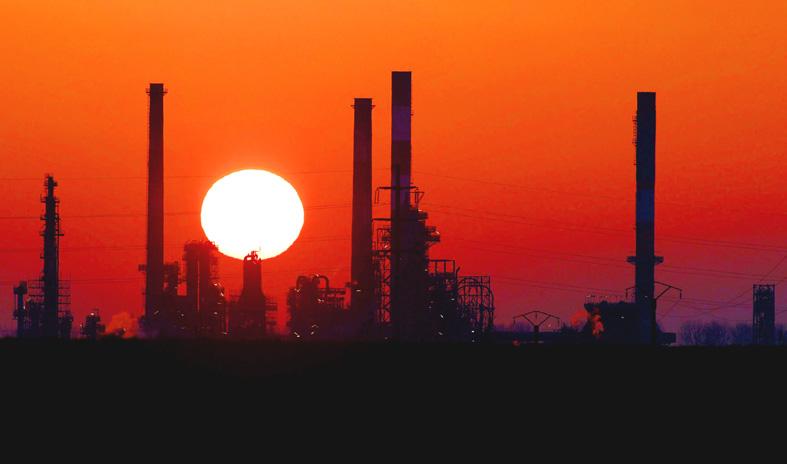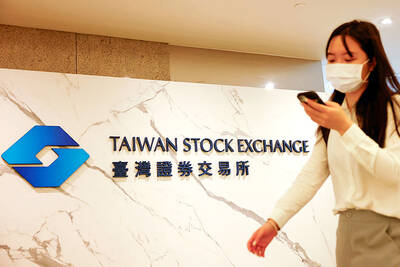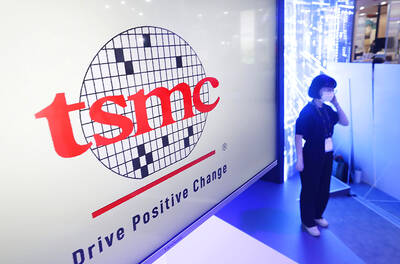A start-up in Iceland is tackling a key piece of the climate change puzzle by turning carbon dioxide into rocks, allowing the greenhouse gas to be stored forever instead of escaping into the atmosphere and trapping heat.
Reykjavik-based Carbfix captures and dissolves carbon dioxide in water, then injects it into the ground where it turns into stone in less than two years.
“This is a technology that can be scaled — it’s cheap and economic and environmentally friendly,” Carbfix chief executive officer Edda Sif Pind Aradottir said in an interview. “Basically we are just doing what nature has been doing for millions of years, so we are helping nature help itself.”

Photo: Reuters
Once considered a pipe dream, capturing and storing carbon dioxide has in the past few years become an area of immense interest for high-profile investors, such as Microsoft Corp cofounder Bill Gates and Tesla Inc chief executive officer Elon Musk, who are searching for solutions to avoid the worst effects of global warming.
The technology can work in two ways. The first is called “carbon capture,” where the gas is trapped from the smokestacks of factories and power plants before it escapes into the atmosphere. A second, more challenging process, is “carbon removal” — withdrawing carbon dioxide from the air around us.
Carbon capture can cut a company or government’s emissions to zero, while carbon removal can help offset its emissions, or even make its impact negative, by taking more carbon dioxide out of the air than it produces.
Carbfix is doing both. It is scaling up its project at the Hellisheidi geothermal power plant to capture carbon emissions as they are released, and it is partnering with Swiss start-up Climeworks AG that builds machines to capture carbon dioxide directly from the air.
While geothermal plants are already classified as renewable energy, they do produce a small fraction of the carbon dioxide that would be generated by a natural gas facility.
When it comes to carbon capture, the Hellisheidi plant can do so at a cheaper cost than buying carbon credits, Aradottir said.
Its process costs about US$25 a tonne, compared with the price of about 40 euros (US$48) a tonne on the EU’s Emissions Trading System, the bloc’s key policy tool to reduce emissions.
Climeworks’ direct air capture operation is much more expensive. On the company’s Web site, individuals can buy offsets that cost more than US$1,200 a tonne. Bulk buyers can get them cheaper.
“I bought out their capacity and I got volume discount,” Gates said in an interview last month. “I think that may be at US$600 [a tonne].”
The Emissions Trading System was created before direct air capture became a viable technology and it does not accept credits for direct air capture.
Yet a growing number of analysts say such offsets would need to become part of the program to ensure that Europe meets its Green Deal objective of becoming carbon neutral by 2050.
That is one reason why Gates and Microsoft are backing projects by Climeworks.
“Climeworks’ direct air capture technology will serve as a key component of our carbon removal efforts,” Microsoft carbon removal manager Elizabeth Willmott said.
Musk last month announced that he would fund a new Carbon Removal Prize that would distribute US$100 million to the best technology innovations over four years.
CarbFix said it is taking part.
Carbfix was born from a research project and founded in 2007 by Reykjavik Energy, the University of Iceland, CNRS in France and the Earth Institute at Columbia University. It is owned by Reykjavik Energy.
The first pilot injections were done in 2012, followed by a full-scale capture plant for two of six high-pressure turbines at the Hellisheidi plant in 2014. The plant’s capture capacity was then doubled in 2016 and the aim is to bring emissions from the plant down to near-zero in the coming years. In 2017, Climeworks installed its direct-air-capture machine at Hellisheidi.
The technology relies on basalts, where the carbonated water reacts with elements such as calcium, magnesium and iron, forming carbonates that fill up empty spaces in the rocks underground. Carbfix is also working with research institutions on making the technology applicable for other types of rock.
The company aims to reach 1 billion tonnes of permanently stored carbon dioxide in 2030.
The global storage potential using the technology is greater than the emissions from burning all fossil fuels on earth, Carbfix said.
Europe could theoretically store at least 4,000 billion tonnes of carbon dioxide in rocks, while the US could store at least 7,500 billion tonnes.
“It will never be the only solution,” Aradottir said. “We are ambitious and have high hopes that we can bring the technology to scale — and there I’m talking about the gigaton scale — and that we’re able to do this quickly because that’s what the world needs.”

ADVANCED: Previously, Taiwanese chip companies were restricted from building overseas fabs with technology less than two generations behind domestic factories Taiwan Semiconductor Manufacturing Co (TSMC, 台積電), a major chip supplier to Nvidia Corp, would no longer be restricted from investing in next-generation 2-nanometer chip production in the US, the Ministry of Economic Affairs said yesterday. However, the ministry added that the world’s biggest contract chipmaker would not be making any reckless decisions, given the weight of its up to US$30 billion investment. To safeguard Taiwan’s chip technology advantages, the government has barred local chipmakers from making chips using more advanced technologies at their overseas factories, in China particularly. Chipmakers were previously only allowed to produce chips using less advanced technologies, specifically

BRAVE NEW WORLD: Nvidia believes that AI would fuel a new industrial revolution and would ‘do whatever we can’ to guide US AI policy, CEO Jensen Huang said Nvidia Corp cofounder and chief executive officer Jensen Huang (黃仁勳) on Tuesday said he is ready to meet US president-elect Donald Trump and offer his help to the incoming administration. “I’d be delighted to go see him and congratulate him, and do whatever we can to make this administration succeed,” Huang said in an interview with Bloomberg Television, adding that he has not been invited to visit Trump’s home base at Mar-a-Lago in Florida yet. As head of the world’s most valuable chipmaker, Huang has an opportunity to help steer the administration’s artificial intelligence (AI) policy at a moment of rapid change.

TARIFF SURGE: The strong performance could be attributed to the growing artificial intelligence device market and mass orders ahead of potential US tariffs, analysts said The combined revenue of companies listed on the Taiwan Stock Exchange and the Taipei Exchange for the whole of last year totaled NT$44.66 trillion (US$1.35 trillion), up 12.8 percent year-on-year and hit a record high, data compiled by investment consulting firm CMoney showed on Saturday. The result came after listed firms reported a 23.92 percent annual increase in combined revenue for last month at NT$4.1 trillion, the second-highest for the month of December on record, and posted a 15.63 percent rise in combined revenue for the December quarter at NT$12.25 billion, the highest quarterly figure ever, the data showed. Analysts attributed the

Taiwan Semiconductor Manufacturing Co’s (TSMC, 台積電) quarterly sales topped estimates, reinforcing investor hopes that the torrid pace of artificial intelligence (AI) hardware spending would extend into this year. The go-to chipmaker for Nvidia Corp and Apple Inc reported a 39 percent rise in December-quarter revenue to NT$868.5 billion (US$26.35 billion), based on calculations from monthly disclosures. That compared with an average estimate of NT$854.7 billion. The strong showing from Taiwan’s largest company bolsters expectations that big tech companies from Alphabet Inc to Microsoft Corp would continue to build and upgrade datacenters at a rapid clip to propel AI development. Growth accelerated for